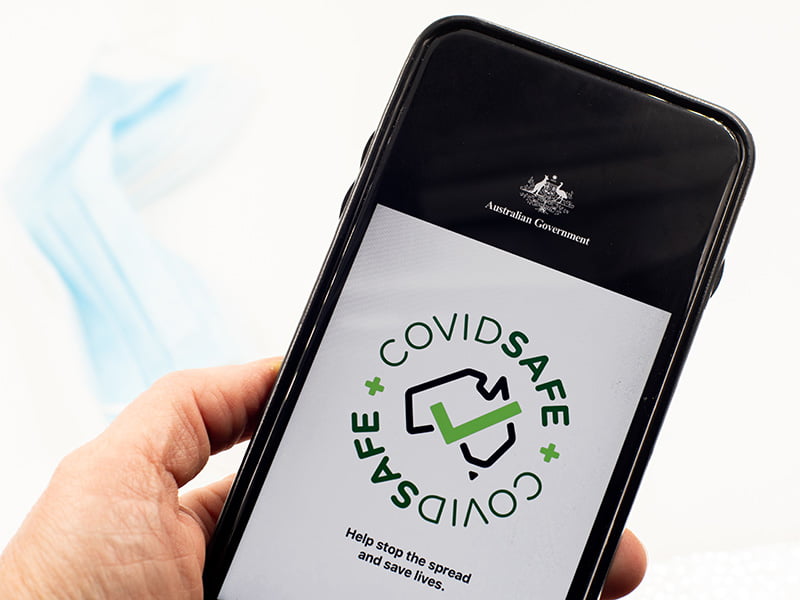Like the villain in a bad horror movie, COVIDSafe refuses to die.
It has been a staggering fall from grace for the contact tracing app, heralded as the “ticket” out of lockdown by the Prime Minister in April last year, when he also compared it to putting on sunscreen.
COVIDSafe has since become a running joke at state government press conferences and typifies the federal government’s approach to shortcomings in its response to Covid-19: Shift blame, block information and avoid apologising.
There have been many issues that could have led to the end of the app, including numerous technical issues and bugs discovered by diligent local developers. The steadfast refusal by government to adopt the Google and Apple protocol for digital contact tracing which has been widely used around the world might have provided a good reason to abandon it.
And the fact that it has only identified 17 new close contacts in the near-18 months since it was launched perhaps should have spelled doom for COVIDSafe.
Government ministers don’t mention the COVIDSafe name publicly these days. And while it has all but disappeared from public view, the government has nonetheless refused to concede that COVIDSafe has failed to deliver on its huge promise.
And even now it is still not being transparent about the effectiveness or otherwise of the app. The government has done the public a huge disservice by not being upfront about performance issues.

The Health department report on the effectiveness of COVIDSafe, which was required by legislation to be tabled “as soon as possible” after every six months but only released for the first time last week, provided an opportunity for a reset on COVIDSafe, and for an informed discussion about whether to persevere with the app and or rejig it.
But the report didn’t include the most important piece of information in this debate: How many people are actually still using it, nearly 18 months on. Anecdotally at least, it seems clear that the public has moved on already, by either no longer keeping COVIDSafe active on their phones or deleting it altogether.
The high prominence given to COVIDSafe when it was launched, with constant references at ministerial press conferences and in advertising campaigns, led quickly to more than 7 million Australians downloading it. But the app has faded from the mainstream and is not mentioned in any government advertising or in efforts to open up following lockdowns.
The report on the effectiveness of COVIDSafe does not include data on the number of active users of the app, despite this being a key metric for understanding its effectiveness and potential as a tool in the ongoing fight to contain the virus.
Without any information on this, the federal government’s long-awaited report on the effectiveness of COVIDSafe isn’t worth its weight in paper.
The Health department and Digital Transformation Agency have also continually blocked Freedom of Information requests for this figure.
It will most likely be a humiliating number for the government, which continually spruiks the more than 7 million Australians have downloaded the app, but must known that a tiny fraction of this are using it.
Being transparent would allow for a public discussion about whether COVIDSafe is a lost cause and should be dropped entirely – with focus turned instead to a more cohesive national QR code check-in system – or whether it is still worth tweaking the app to better meet the demands of the Delta variant of COVID-19.
The federal government has flagged that its is working on a tweak, faithfully dropping the news to the Australian Financial Review before the release of the effectiveness report. The AFR dutifully reported this development uncritically, without so much as a raised eyebrow.
Incredibly, the government is only considering this tweak now, months after the threat of the Delta variant was widely known and while much of NSW is in an extended lockdown, and Victoria and Queensland have had Delta scares – long after such a tweak may have been useful.
Those most interested in this announcement will be the outsourced consulting firms, digital designers and cloud service giants who are likely to see a windfall of additional contracts for work on a COVIDSafe tweak, having already netted nearly $10 million.
The long-awaited report does at least confirm that COVIDSafe has only picked up 17 close contacts not already identified by manual contact tracers, despite the federal government’s best efforts to boost this figure by including cases found manually after the app identified a new exposure time. None of these 17 cases were identified this year.
Giving digital contact tracing a go wasn’t a bad strategy and is not in question. The problem relates to how the federal government sold COVIDSafe to the Australian public, and the undue prominence that was placed on it in preventing further lockdowns.
And it relates to the goverment’s refusal to discuss its shortcomings – to point out the bleeding obvious, that it is not working as intended and is not doing its job. This is a sure way to undermine public trust.
Government seems locked into the current approach, potentially wasting time, money and the goodwill of the Australian public to embrace policies aimed at combating the ongoing pandemic.
The Prime Minister must surely regret his comment that using COVIDSafe is like putting sunscreen on before leaving the house. For the few Australians still turning the app on before leaving their home, it has not provided the protection that was promised.
Do you know more? Contact James Riley via Email.

